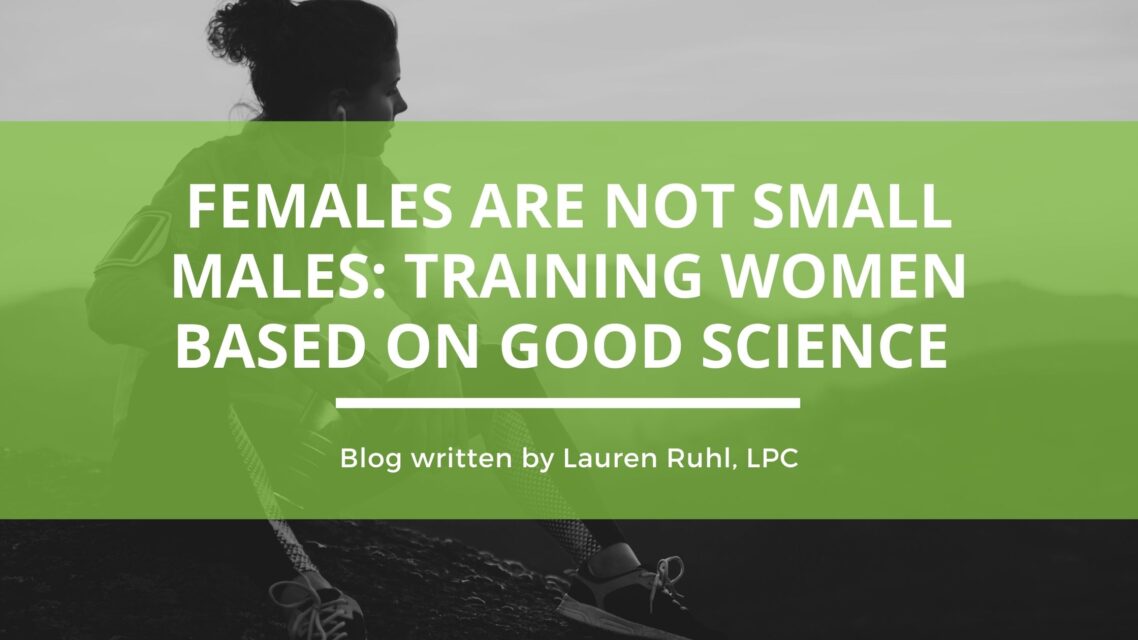Blog written by Lauren Ruhl, LPC
As a Sport Psychology Consultant, I help athletes strive to perform at their best. In order to achieve this goal, athletes must begin to learn how to overcome adversity, manage their doubts and fears. This work becomes even more complex when we consider the gender of the athlete, along with whether they have suffered an injury.
For instance, did you know there is a correlation between a woman’s period and tearing her ACL? Crazy right? Female physiology in sport is a topic that benefits athletes, coaches and professionals in the world of strength and conditioning and sport and performance psychology. A true understanding of female physiology allows us to help our athletes achieve optimal performance. Before we begin, a clarification: when we reference women in this blog, we are talking about those who identify as women and have female hormones. So let’s get into it!
I recently came across the book Roar by exercise physiologist, Stacy T. Sims. She sheds light on the physiological differences between men and women in hopes to provide a more scientific lens to help women optimize performance. I think Sim’s describes it best by saying females are not small males. Typically, strength and conditioning research has used male participants to develop their strength training programs. The assumption has been that what works for men will work just as well for women. We are now seeing, however, that it’s time to say otherwise!
It’s due time for women to begin working with their beautiful, strong bodies rather than fighting against them. Hormonal fluctuation, menstruation, menopause, and pregnancy impact women in unique ways, and thus they need programs specifically designed to their bodies and needs.
If you’re a woman athlete reading this, I want you to reflect: are there times that you train and just feel better than others? Or, perhaps some days that you just feel worse or experience more pain for no clear reason? This is to be expected and is totally normal! Research has shown that there are particular times when a woman can more easily lift heavy, recover properly and feel “spot on;” all because her physiology is functioning optimally. There are other times when she may feel sluggish and more fatigued because of her hormonal fluctuations. These physiological changes truly impact her ability to recover in the same way!
These changes do not mean that women are less capable than men. Instead, it shows the importance of recognizing how a woman’s body responds throughout her menstrual cycle phases and how to adapt training and guidance to reflect these shifts. Once symptoms are monitored, identified, and then integrated into a strength program, similar to men, women will see strength gains and adaptations. We are talking about how to work with the female body, rather than trying to fight against it.
Putting Theory Into Practice
Recently, I have been integrating Sim’s suggestions with a few clients and it’s been powerful to see the impact it has on their training. For each athlete, their strength coach had them monitor their cycles: writing down symptoms, emotions, mood, soreness, and quality of sleep. Then, the coach tailored training programs to correspond to their menstrual phases.
For example, all of my athlete-clients had four different training “phases.” During Phase 1 and 2, they lifted much heavier and had more intense lifting sessions, to support their physiology. Then, during “Phase 4” or their “de-load” week, they had more active recovery days and less strenuous workouts. What I found even more fascinating was that the athletes I worked with all had different “recovery plans” because their bodies all responded and reacted differently during their menstrual cycle. More specifically, one athlete had 2 rest days where the other had one, all due to the way their bodies recovered and responded during Phase 4. With these alterations it allowed both athletes to see strength gains and increased success because they were finally doing what their body needed. Therefore, it’s not just that women as a whole should have different training programs, but the programs may need to be adapted due to their physical needs and responses. Super unique and really cool!
The Psychological Piece of the Puzzle
Other than physical training benefits, this knowledge helped my clients become more aware of how their body responds and also how they emotionally respond during certain parts of the month. As a performance coach, I love when my clients are more connected to their mind and body! One of my athletes realized that she became much more irritable and emotional during her “Phase 4 or de-load week,” and with this information, we were able to discuss and identify self-care options to use when necessary, and what needs to happen when she feels more overwhelmed than normal. These insights are beneficial for all ages and stages of training! The better we are able to understand ourselves, the more we can adapt our efforts and feel strong both emotionally and physically along the way.
Let’s put this into practice and look at how this could help during competition. If an athlete knows she will be in Phase 4 during a competition, this will allow her to be aware of how to uniquely prepare for the performance. She can create a plan that helps her stay calmer and more relaxed without placing too much judgment on situations that arise. Having more of an understanding and being able to prepare in different ways is always a good thing.
Whether you are a woman athlete or a professional in the sport world reading this, I would encourage you to look at training through a more holistic lens. Female and male bodies are different. And, our physiologies have us dealing with situations uniquely. When we take into account all the facets of our bodies and lives, we can encourage our athletes (or ourselves) to train in the way our bodies truly deserve.
To contact Lauren, email her at [email protected].

